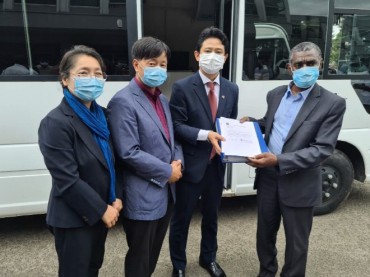
The demographic outlook is the latest reminder of a rapidly aging population in the country that has been plagued by the low birthrate for more than a decade. (image: Yonhap)
SEOUL, Sept. 18 (Korea Bizwire) — The number of South Korean households is likely to peak at 22.65 million in 2040 before declining to 22.3 million in 2047, the country’s statistics agency said Wednesday, in the latest sign of a population decline in Asia’s fourth-largest economy.
In 2017, the number of households in South Korea came to 19.57 million, according to Statistics Korea. The average number of people in a household is projected to decline to 2.03 in 2047 from 2.48 in 2017.
In comparison, the statistics agency forecast in March that South Korea’s population is likely to peak at 51.94 million in 2028 before declining to 39.29 million in 2067.
The demographic outlook is the latest reminder of a rapidly aging population in the country that has been plagued by the low birthrate for more than a decade.
The latest projection shows that the proportion of one-person households could jump to 37.3 percent of total households in South Korea in 2047 from 28.5 percent in 2017.
The hike in single-person households has been widely blamed on an increase in the number of unmarried people and elderly people.
More young South Koreans are opting to distance themselves from life’s three major milestones — dating, marriage and having children — because they cannot find decent jobs amid a prolonged economic slowdown.
Other factors are the high cost of private education for kids and skyrocketing real estate prices, as well as the difficulties women face in finding jobs after spending extended time away from work to raise children.
In 2018, South Korea’s total fertility rate — the average number of children a woman bears in her lifetime — hit a record low of 0.98, much lower than the replacement level of 2.1 that would keep South Korea’s population stable at 51 million.
The statistics agency said the proportion households headed by people aged over 65 is projected to increase to 49.6 percent in 2047 from 20.4 percent in 2017.
In 2040, the proportion households headed by people aged over 65 is projected to account for 44.2 percent, compared with 44.2 percent in Japan in 2040 and 37.2 percent in Britain in 2041.
A country is defined as a super-aged society when more than 21 percent of its people are 65 or older.
Earlier this month, the statistics agency said Asia’s fourth-largest economy will have the largest proportion of people aged 65 years or older with 46.5 percent of the country’s population in 2067 among 201 countries.
In comparison, the proportions of people aged 65 years or older in the U.S., China, and Japan are projected to stand at 25.1 percent, 29.9 percent and 38.1 percent in 2067, respectively.
(Yonhap)






